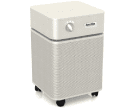Indoor Air Quality Testing
The Environmental Protection Agency (EPA) ranks poor indoor air quality among the top five environmental risks to public health. According to the EPA, we spend up to 90% of our time indoors where the levels of air pollution can be two, five, and up to 100 times higher than outdoor levels. Studies now prove that the air quality in your home, office, or workplace has a direct effect on your overall health and well-being.
The American College of Allergies confirms that 50% of all illnesses are either caused by, or aggravated by polluted indoor air. Airborne pollutants such as chemicals, gases, molds, viruses, and particles are found in every home and office-no matter how clean the environment. The health effects of breathing polluted indoor air can contribute to short and long-term health problems.


Common Indoor Air Contaminants and Pollutants Include
Biological contaminants such as bacteria, mold fungi, viruses, gases, formaldehyde, volatile organic compounds (V.O.C.'s) such as paints, varnishes, aerosols such as hair spray,and gas fumes; pesticides, tobacco smoke, soot, carbon, carbon monoxide, allergens, pollen, dander, asbestos, lead, radon, dust, insulation, insects, and rodents.
Viruses such as the recent pandemic of COVID - 19 Coronavirus to humans can also become a severe effect on the respiratory system, specifically the lower respiratory capacity of the lungs, shortness of breath or difficulty breathing.
Symptoms Linked to Poor Indoor Air Quality (I.A.Q.)
- Headaches-Migraines, Fatigue, Dizziness, Nausea
- Sinus Infections, Irritants of the Eyes, Nose, Throat
- Increase in Allergies, Asthma Attacks
- Respiratory Conditions, Chronic Coughing, Bronchial
- Damage to Liver, Kidneys, and Neurological Conditions, Cancer
Improving the ventilation and air flow in your home, office, and business is very important to your health.
Remember, "THE SOLUTION to POLLUTION is DILUTION".
We also provide consulting services with a network of trained professionals to help fit your proper needs where necessary.
Allergies - Asthma
It has been estimated that 50 million people suffer from upper respiratory tract symptoms that are reactions to allergies to airborne particle matter. People that are affected by allergies are usually not just from the outdoors such as hay fever, ragweed, or pollen. Our focus is on the indoor air quality that you breathe in your home or office and not the outside elements.
However, outside seasonal allergens can exacerbate the problem during high seasonal counts. Many people are irritated by the 'air they breathe' right in their own home or workplace environment. Indoor air particles float around throughout the air which can be hidden in the carpets, bedding, cooking, lack of proper ventilation, pets and animals, water leaks, flooding, excess moisture and relative humidity, HVAC duct unit system contaminated with mold spores, dust, debris, and bacteria.
People can be affected by several different types of common allergens such as mold fungi, dust, dust mites, pollen, dander, food, rodents, cockroaches, pets, and pests. Symptoms can be sneezing, runny noses, sinus infections, post-nasal drip, itchy nose, stuffy nose, and red, itchy or watery eyes. Redness, swelling, blisters, or scaling can flare up on the bodies, arms, legs, stomach, etc."
Common Allergy - Asthma Triggers
- Mold-Mildew-Fungus
- Excess Moisture- High Relative Humidity (usually over 60% or more)
- Pollens- Ragweed- Weeds- Grasses- Trees- Shrubs
- Dust- House Dust- Dust Mites
- Mite Feces- Mice Droppings- Cockroaches
- Pet Dander- Animal Dander- Cat Saliva
- Cigarette- Tobacco Smoke- Wood Stove Smoke
- Food- Peanuts- Tree Nuts- Shellfish (oysters, clams, lobster)
Allergen Testing Indoors: There are many different contaminants in indoor environments that can cause or aggravate allergies and asthma. Dust can contain a multitude of allergens including dust mites, mold spores, and pet dander. A major reservoir for collecting and holding dust indoors are carpets. We use a vacuum cannister to collect dust samples on carpets, sofas, bedding, etc. to look for dust mites, pet dander, mold spores etc.
Dust mites commonly live in house dust and eat skin cells shed by humans and animals. They thrive in warm humid climates. In most homes, beddings, upholstered furniture, and carpets provide an ideal environment for dust mites.
Total Particulate Allergy Sampling and Testing: Fibers, Pollen, Dust, Dander, etc.
ASTHMA
Asthma affects your breathing and can become a chronic problem. Your airway passages and tubes often become swollen, inflamed, and irritated by a reaction to some kind of allergy trigger. Some asthma symptoms include coughing, wheezing, chest tightness, and shortness of breath. Approximately 22 million people in the U.S. have asthma and approximately half of this number are children.
Most people with chronic asthma usually develop the disease before the age of 10 and under. Adults approximately 7% to 10% with chronic respiratory breathing are vulnerable as well.
There is a strong correlation of asthma and dampness such as in basements, crawlspaces, and workplace building with chronic water and moisture problems, roof leaks, window leaks, plumbing leaks, condensation, and high indoor relative humidity. The Institute for Medicine (IOM) concluded that there is an association between exposure to damp indoor environments and cough, wheezing, upper respiratory tract such as nose and throat symptoms, and the exacerbation of asthma. They also concluded that there is an association between the presence of mold and bacteria in damp indoor environments and hypersensitivity pneumonitis [IOM 2004].
Pro-Active Measures to some Allergy/Asthma Triggers
- Eliminate dust exposure. Clean house or office often and HEPA vacuum carpets, baseboard heater fins, sofas, etc. (The less carpet the better).
- Clean hard to clean areas such as windows, tops of book shelves, door frames, picture frames, top side of ceiling fans, light fixtures, curtains, blinds, and drapes.
- HVAC duct vents & dryer vent keep clean.
- Check the front loader washer machine rubber gasket and keep clean and dry.
- Operate bathroom exhaust fan during showers or baths for at least 20 to 30 minutes to help alleviate moisture.
- Use quality dehumidifiers and keep relative humidity in the range of 30% to 50%.
- Use air conditioning and keep windows closed during high humidity, high allergy seasons.
- Wash bedding weekly in hot water at least 130-degree F. temperature.
- Use allergy covers for bedding, pillows, etc.
- Purchase a small hygrometer to help keep the temperature and relative humidity indoors.
- Invest in quality Austin HEPA air purification for the indoor air quality of your home or office www.airenvironments.com/products.
- Hire Environmental Resources for your indoor air quality needs for allergens, dander, mold, odors, & more....

There are several ways you can become exposed to Mold:
Breathing in the spores from the air. Tiny spores reproduce and are invisible to the naked eye and float through indoor and outdoor air (these fungi are called fruiting bodies).
Skin contact from handling or rubbing an object with mold on it.
Neglecting to do something about mold whether it is seen or unseen (musty odors).
Mold fungi feeds off water, moisture, dampness, organic food source, and amiable temperatures.
Mold can cause Health Problems
Molds have the potential to cause health problems and even make a home become uninhabitable. Each person is affected differently when they come in contact with mold. Molds produce allergens (substances that can cause allergic reactions), irritants, and in some cases (mycotoxins: potentially toxic chemical substances). Removing drywall, wallboard with excess spores and carelessly can cause spores to spread.
Inhaling or touching mold or mold spores may cause allergic reactions in sensitive individuals.
Mold Exposure even in small amounts may cause
- Itching or irritation of the nose, eyes, skin, or throat
- Mysterious skin rashes
- Sinus infections or congestion / sinusitis (runny nose)
- Respiratory problems (sneezing & coughing) upper or lower infections
- Frequent headaches, fatigue, chronic aches and pains
- Trouble concentrating, memory lapses, confusion
- Mood swings, anxiety, depression vomiting
Mold can be found in the Home, Office, Business, Medical, Gymnasiums
Basements, crawlspaces, attics, interior walls caused by water leaks, ice dams.
There are currently no governmental standards TLV's for mold testing.
Examples include:
- Basements, crawl spaces, kitchens (bottom of fridge), bathrooms, laundry wash/dryer area
- Underneath carpets and pads, tiles, flooring, sub floors , floor joists
- Drywall (front & backside), hidden mold, wallpaper, paneling, studs
- Ceilings, attics, floor joist(especially prior or existing roof leaks)
- HVAC systems & duct work, vents-registers, cooling coils
- Anywhere there is preexisting or current flood moisture situations.
- Modern, tightly sealed homes can increase the likelihood of mold due to moisture and lack of air flow between wall cavities.
- Gyms and Workout areas for mold, bacteria pools, steam rooms, saunas, exercise equipment, floor mats etc. Unkempt locker rooms, showers.
Additional Resources including Mold Facts:
U.S. Environmental Protection Agency
Frequently Asked Questions about Mold
Washington State Dept. of Health
Minnesota Dept. of Health
American Academy of Allergy Asthma & Immunology
Asthma & Allergy Foundation of America (AAFA)
American Lung Association (ALA)
Floods/Flooding
ANSI/IICRC S520
OSHA
Center for Disease Control




